Bromeliad and its cultivation at home
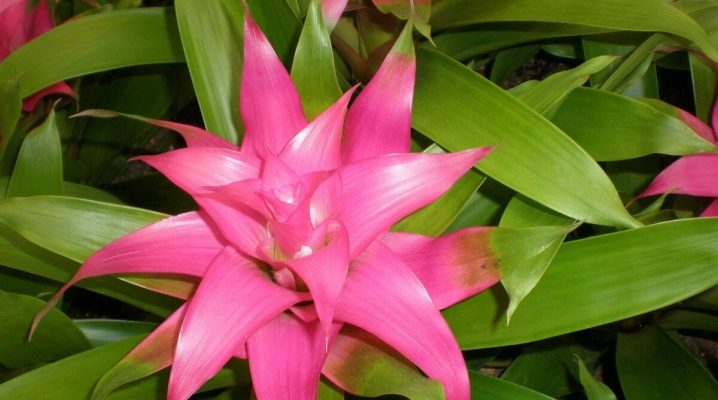
Bromeliad is an unusual bright flower. In nature, it is found only in regions with a warm climate. But flower growers have already learned how to grow exotic perennials at home.
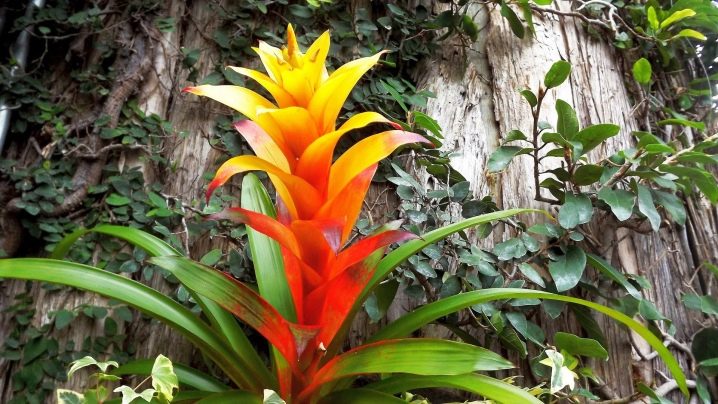
Description
This plant belongs to the bromeliad family. It grows in the tropical regions of America. The flower looks very beautiful. You can notice it from afar.
Bromeliad bushy rosette consists of several long, narrow leaves. They are smooth and quite fleshy. A groove is located in the center of each sheet plate. Thanks to this structure of the leaf, rainwater quickly flows into the center of the outlet. The foliage of bromeliads is often brightly colored.
In the center of the green rosette, over time, a bright, large peduncle grows. It is elongated and intensely colored. The color of the bud can be scarlet, orange or yellow. In a house or apartment, an exotic plant blooms in late winter or early spring.

Views
The following types of bromeliads are most often grown at home.
-
Penguin. This plant is also known as wild pineapple. The shrub is large. In height, it grows up to 2 meters. Therefore, such bromeliads are rarely grown in apartments and houses. The foliage of this plant is long. It is covered with short yellowish spines. The buds of such bromeliads are collected in neat conical inflorescences.

-
Gusmania. This is a less voluminous flower. Its foliage is dense and collected in tight rosettes. The flowers in Guzmania are not as bright and attractive as in other varieties of bromeliads. But this is offset by the beauty of the foliage of the plant.
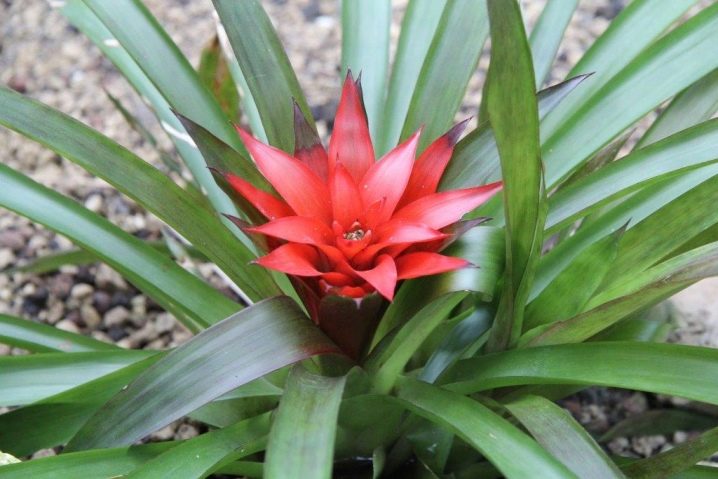
-
Vriezia. This flower is distinguished by bright large inflorescences made in the form of an ear. Their color is yellow-red. Under the inflorescence are neat rosettes of dense juicy leaves. The leaf plates of the flower can be either purple or variegated.
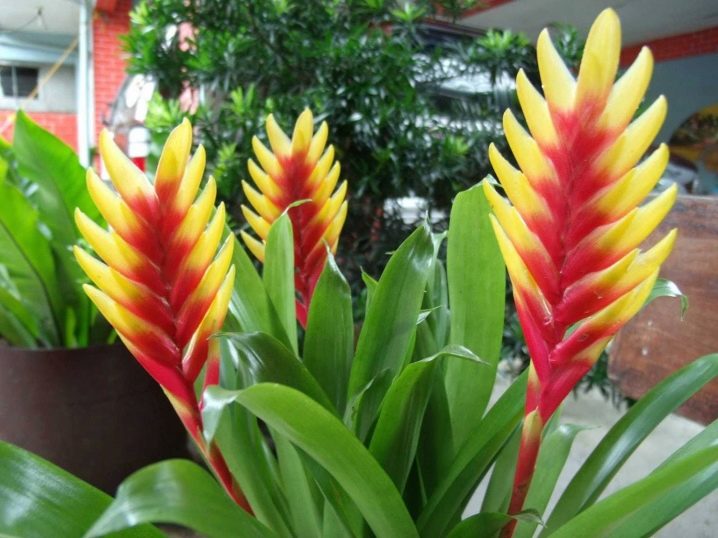
-
Ehmeya. It is a beautiful flower with scalloped leaves and a long peduncle. Flowers in different varieties of such a plant can be both bluish and coral or pink.
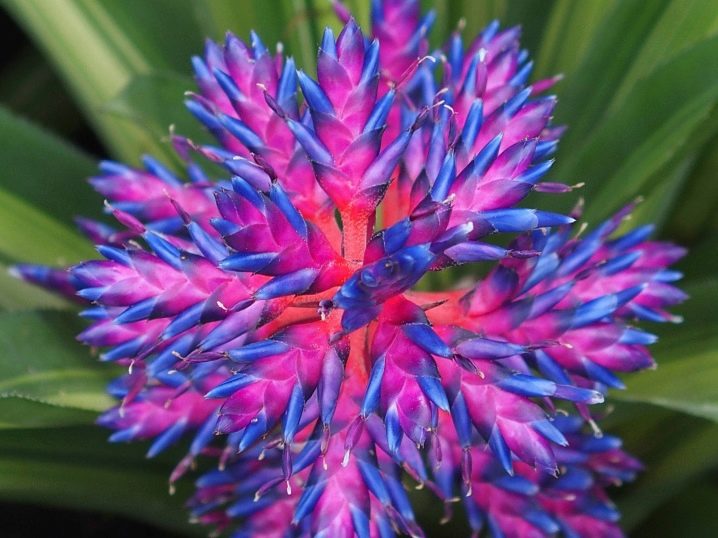
-
Tillandsia. This bromeliad variety has long and narrow leaves. This is the main difference between a flower and its congeners. Flowers in such bromeliads can be blue, purple and pink.
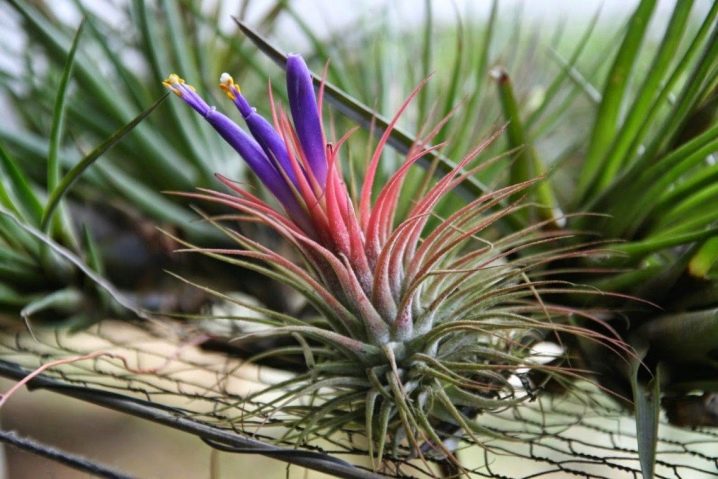
- Neoregelia. She has wide and smooth sheets. On the edge of each of them there are short spikes. The color of the leaves is light green. The rosettes in the center are paler.
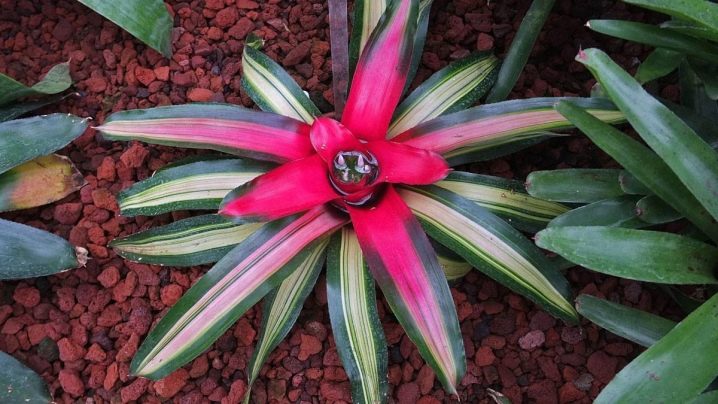
All of these color varieties need the same care.
Landing
Bromeliads are available at many gardening stores. When buying a flower, it is important to carefully examine the plant. It should have a dense rosette consisting of green healthy leaves. There may be a slight pattern on the foliage surface.
Immediately after purchase, the plant needs a transplant. It is very important for him to choose the right quality soil.
Bromeliad grows well in a light, loose substrate. Most often, they buy special soil for orchids for her.
Moreover, the soil for the flower can be prepared at home. To do this, you need to mix turf, peat and humus in a 2: 1: 1 ratio. A small amount of clean sand must be added to a container with this mixture. Instead, you can use sphagnum, pieces of charcoal or perlite. All these additives should be no more than 20% of the volume of the soil.
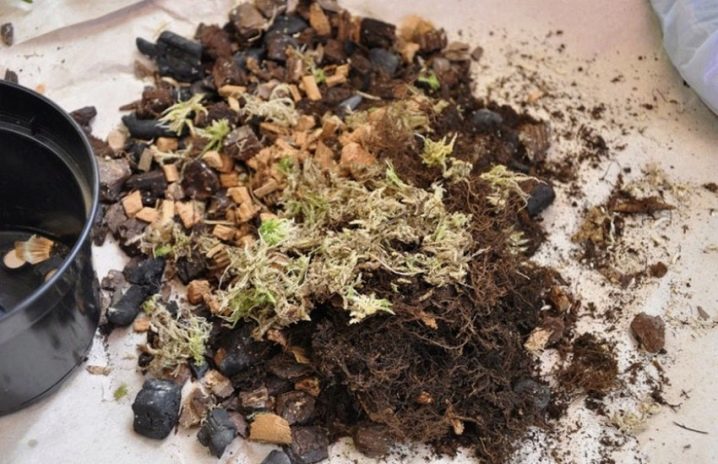
You will need to transplant the plant into a larger pot.For this, it is advisable to choose containers made from natural materials. A great option is a ceramic pot. The process of transplanting a flower consists of the following steps.
- First you need to mix the soil and fill it with the selected container.
- You need to make a small depression in the ground.
- The plant is carefully removed from the old pot. Its roots are slightly shaken off the ground.
- After that, the flower is planted in a well prepared in advance.
- Next, the plant is well watered with warm, settled water.
The soil next to the stem is carefully tamped. After that, the container with the flower is moved to a permanent place.
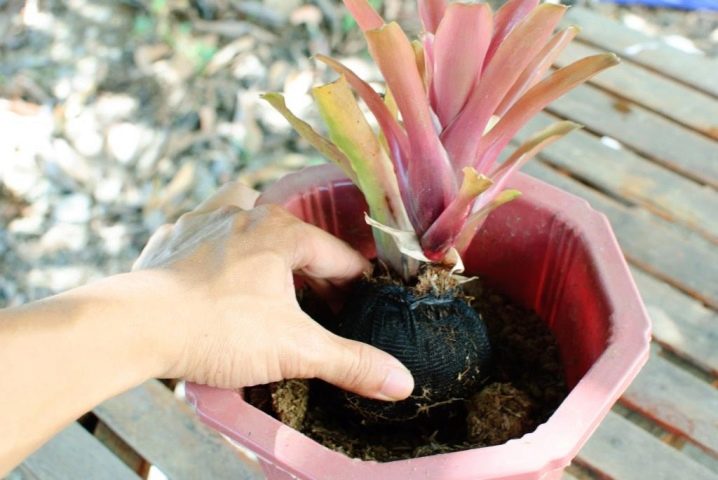
Care
Caring for indoor bromeliads is pretty straightforward.
Conditions
First of all, you need to create suitable conditions for the flower for development. It is recommended to place bromeliads on western or eastern windowsills. The plant must be constantly exposed to light. In this case, it is important that direct sunlight does not fall on it. If the bromeliad is located on the south window, it must be shaded.
In spring and winter, the flower must be provided with additional lighting. For this, a lamp is placed next to it. It is important, however, that the light is not directed directly onto the green foliage. This will cause it to dry out.
The plant must be reliably protected from drafts. The optimum temperature of the room in which it is located is 23-25 degrees. In winter, it is reduced to 20 degrees.
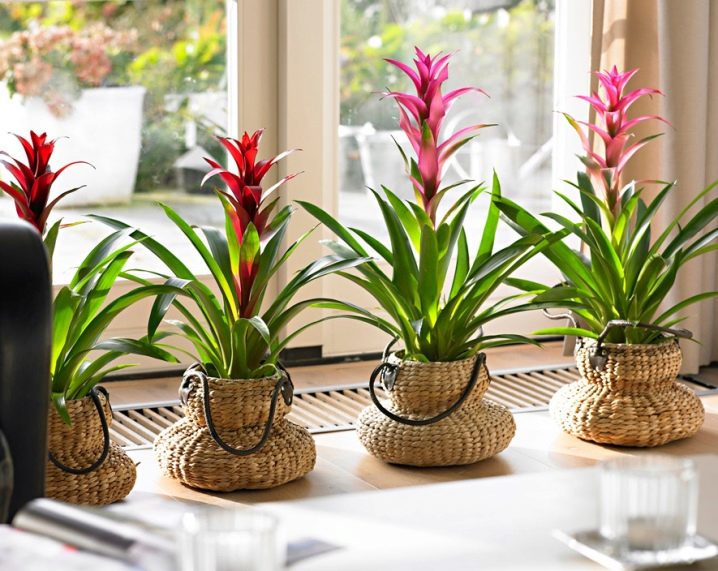
Watering
Watering bromeliads has its own characteristics. The root system of this flower cannot absorb moisture from the soil. The plant absorbs it through the foliage. Therefore, water must be poured directly into the center of the outlet.
Water the flower growing at home, preferably with soft water. It can be wet or thawed. If it is not possible to collect such a liquid, tap water must be defended for several days.
The outlet and the leaves of the plant must be regularly wiped from dust. This is done with ordinary napkins.

Since in nature bromeliad grows in a humid rainforest, it is also important for it to create suitable conditions indoors. The humidity in the room should always be within 60%.
To maintain it at this level, you can place a regular air humidifier next to the plants. If this is not possible, a container with expanded clay, filled with clean water, is placed next to it. It should be wide enough. If there are many flowers in the house, a small decorative fountain should be placed next to the plants.
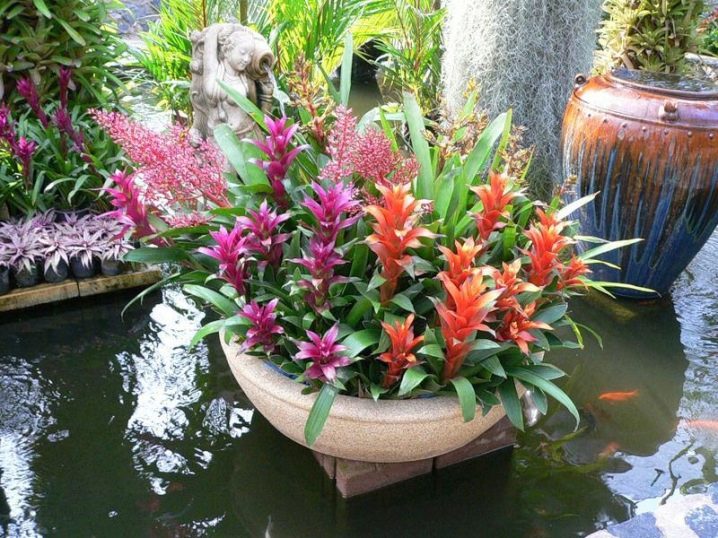
Top dressing
Home-grown bromeliads are fed once a month. Fertilizer is usually added to the water for irrigation. Usually, growers use a universal fertilizer for orchids. It contains all the substances that bromeliads need for normal development. You can apply top dressing to the soil at any convenient time.
Separately, it should be noted that there is a simple way to speed up the flowering of bromeliads. For this, the plant is placed in a plastic bag right in the pot. Several apples and bananas are also placed there. During the ripening process, these fruits release ethylene. It stimulates the flowering process.
When the bromeliad has faded, you must wait for the bud to dry out. Immediately after that, it must be cut off with a sharp knife. At this stage, the bromeliads can be transplanted or transplanted into a new pot if the flower has greatly increased in size.
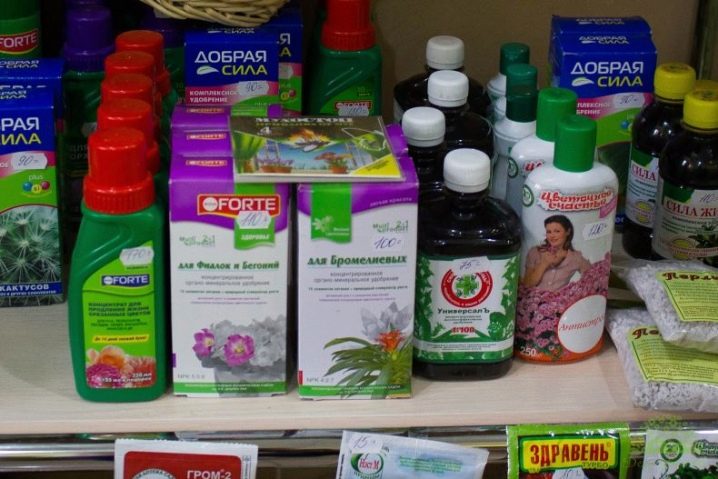
Reproduction
There are two main breeding methods for bromeliads.
-
Shoots. Sooner or later, babies appear next to any adult plant - small green shoots. They are not touched for three months. During this time, the plants should have time to get stronger. Further, the processes must be cut off. Slices are carefully sprinkled with charcoal. Next, you need to prepare a container for transplanting processes. It is filled with a mixture of sand and peat. After that, prepared sprouts are placed in a container. Cover the container with a film on top. It is periodically moistened and ventilated. As soon as the plants take root, the film is completely removed.It will be possible to transplant a new flower into open ground in about a year. It will bloom in another two years.
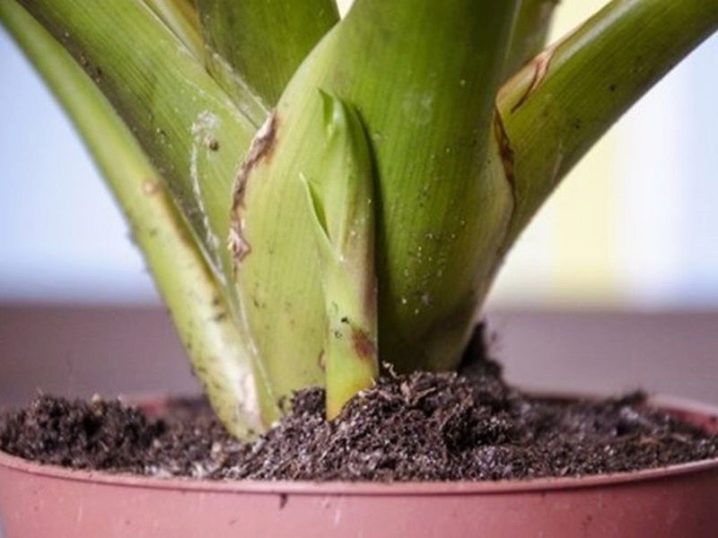
- Seeds. An exotic flower can be propagated by seeds. Seed material is bought at a gardening store. They also acquire soil there. The soil is pre-disinfected before planting plants. Seeds are sown into the prepared soil. You should not bury them in the ground. Usually they are scattered over the surface of the soil, and then sprinkled with a thin layer of soil. Next, the ground is carefully sprayed from a spray bottle. Covering the container with a film, it is sent to a warm place for 15-20 days. After the appearance of the first shoots, the shelter is removed. As soon as the plants are strong enough, they dive. The flower is transplanted to a permanent place after 2-3 months.
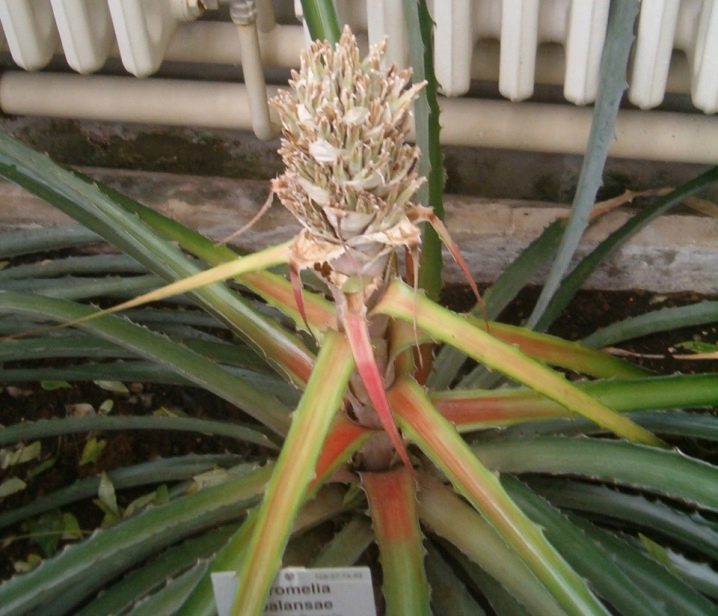
If done correctly, bromeliads will quickly take root in a new place.
Diseases and pests
An exotic plant is rarely sick. But in some cases, powdery mildew or rust affects the flower. Noticing a white or dark brown bloom on the foliage, the flower must be treated with proven fungicides. They should be used outdoors or in a well-ventilated area.
They are dangerous for an exotic thermophilic plant and small pests. Usually the flower is attacked by scale insects and scale insects. Noticing that the top of the plant has dried up and the foliage has begun to fade, it is treated with soapy water. The product is applied to the foliage with a cotton pad. If there are too many pests, the florist is recommended to use Fitoverm or its analogues. If you properly care for a thermophilic exotic flower, it will delight its owners for a long time with beautiful flowering.

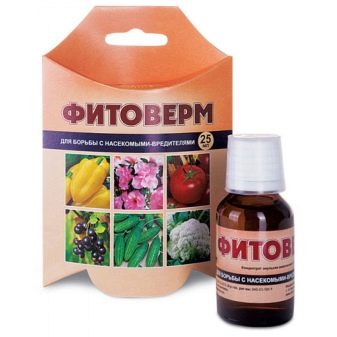































The comment was sent successfully.